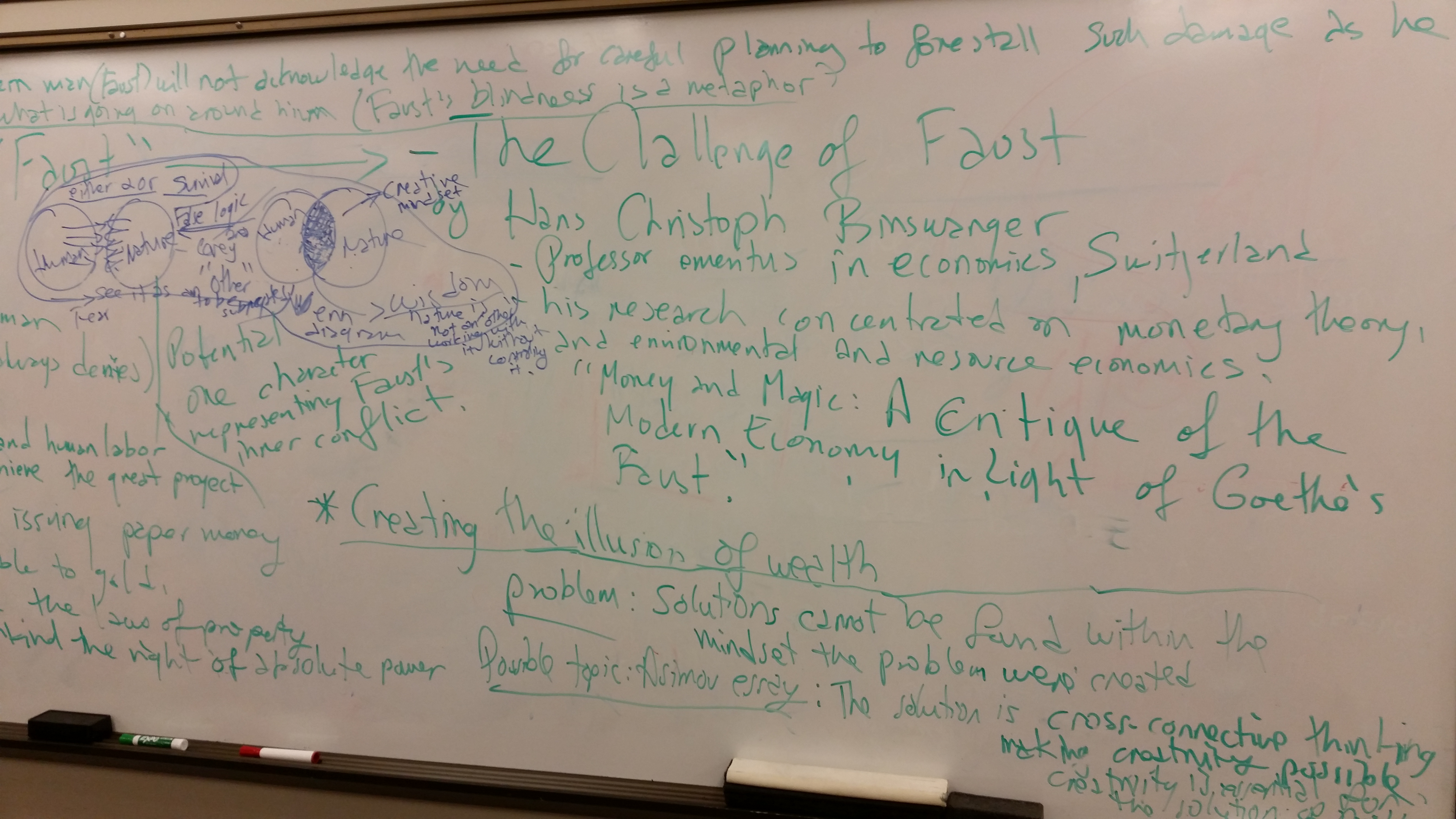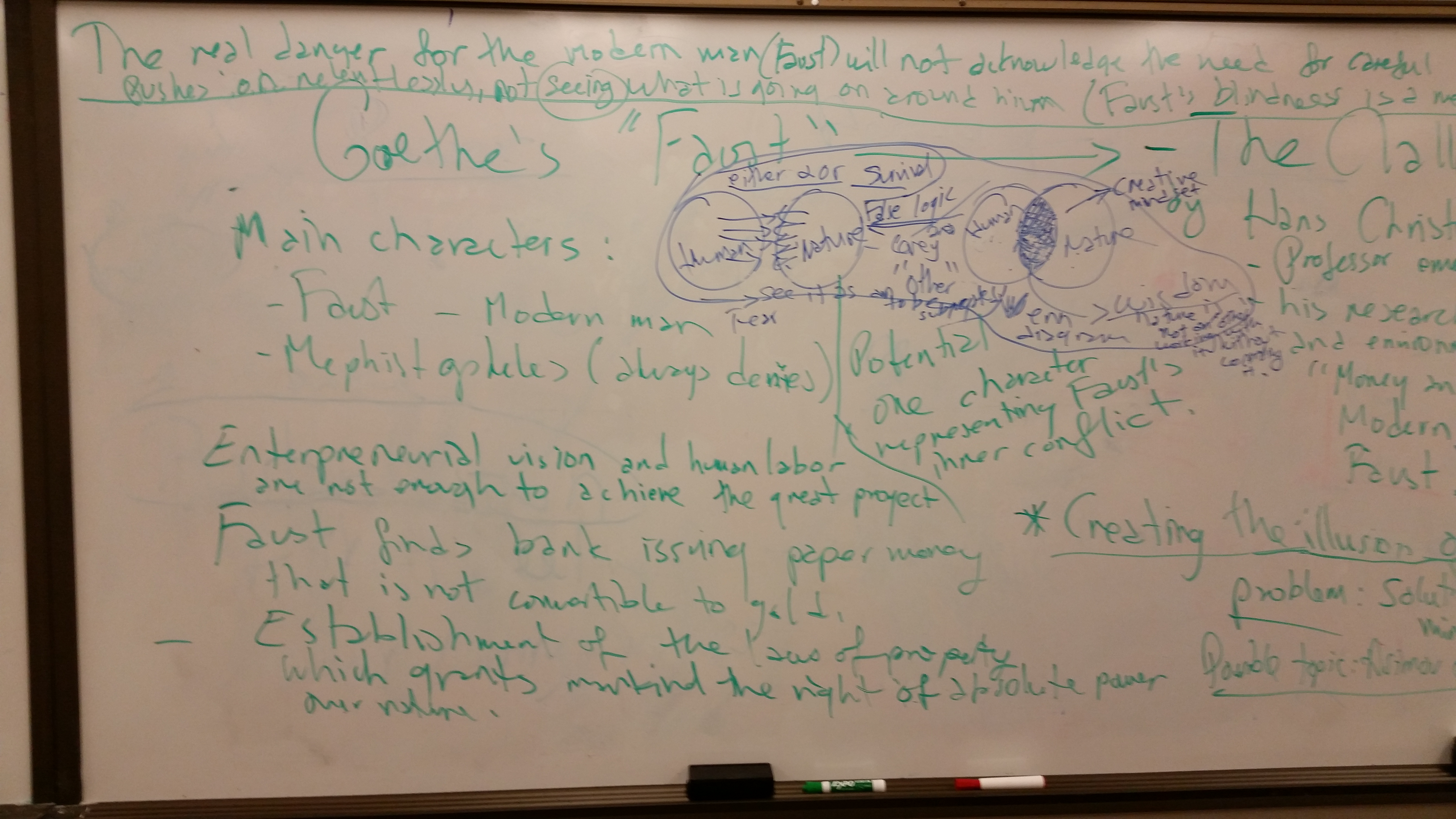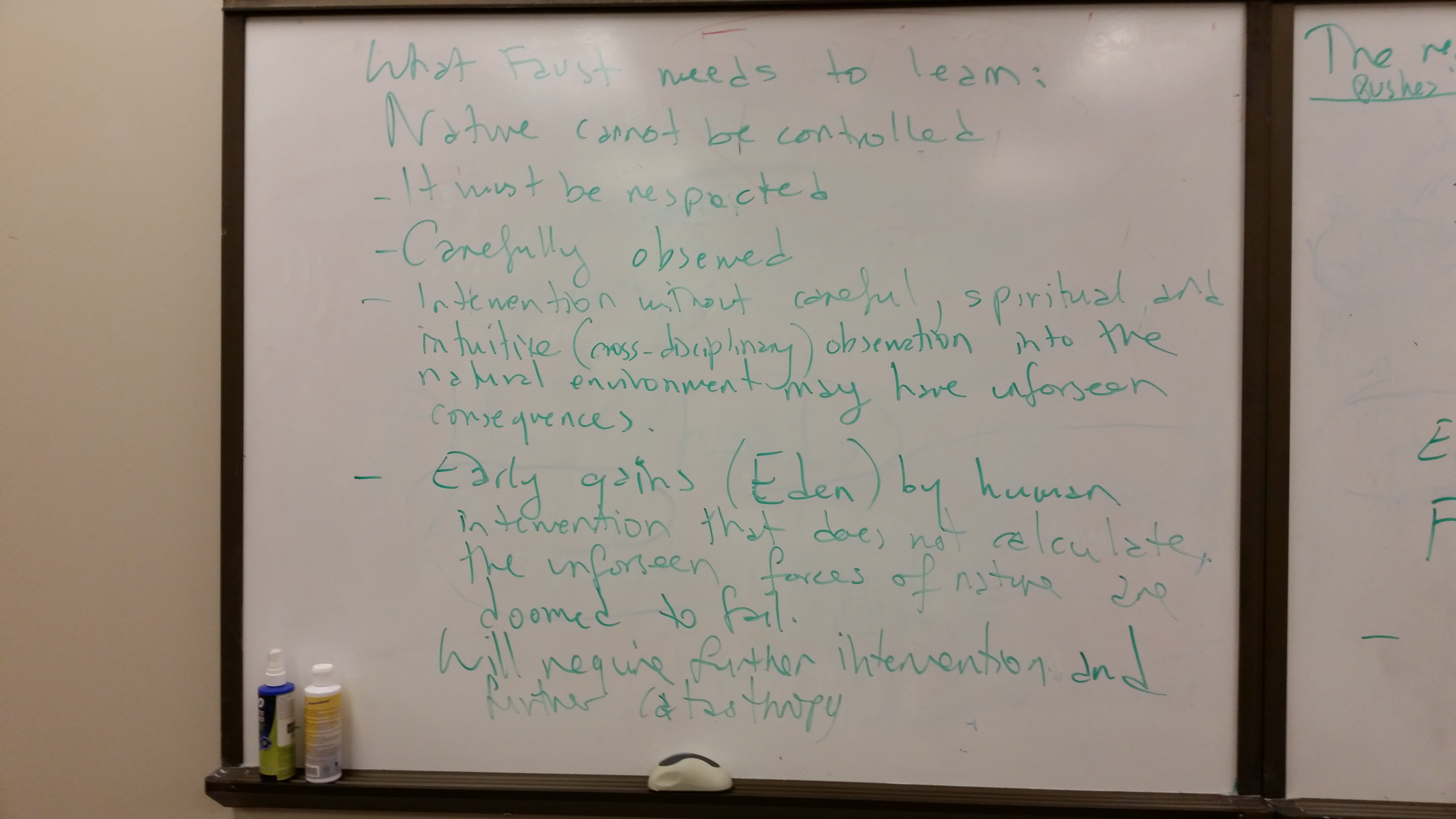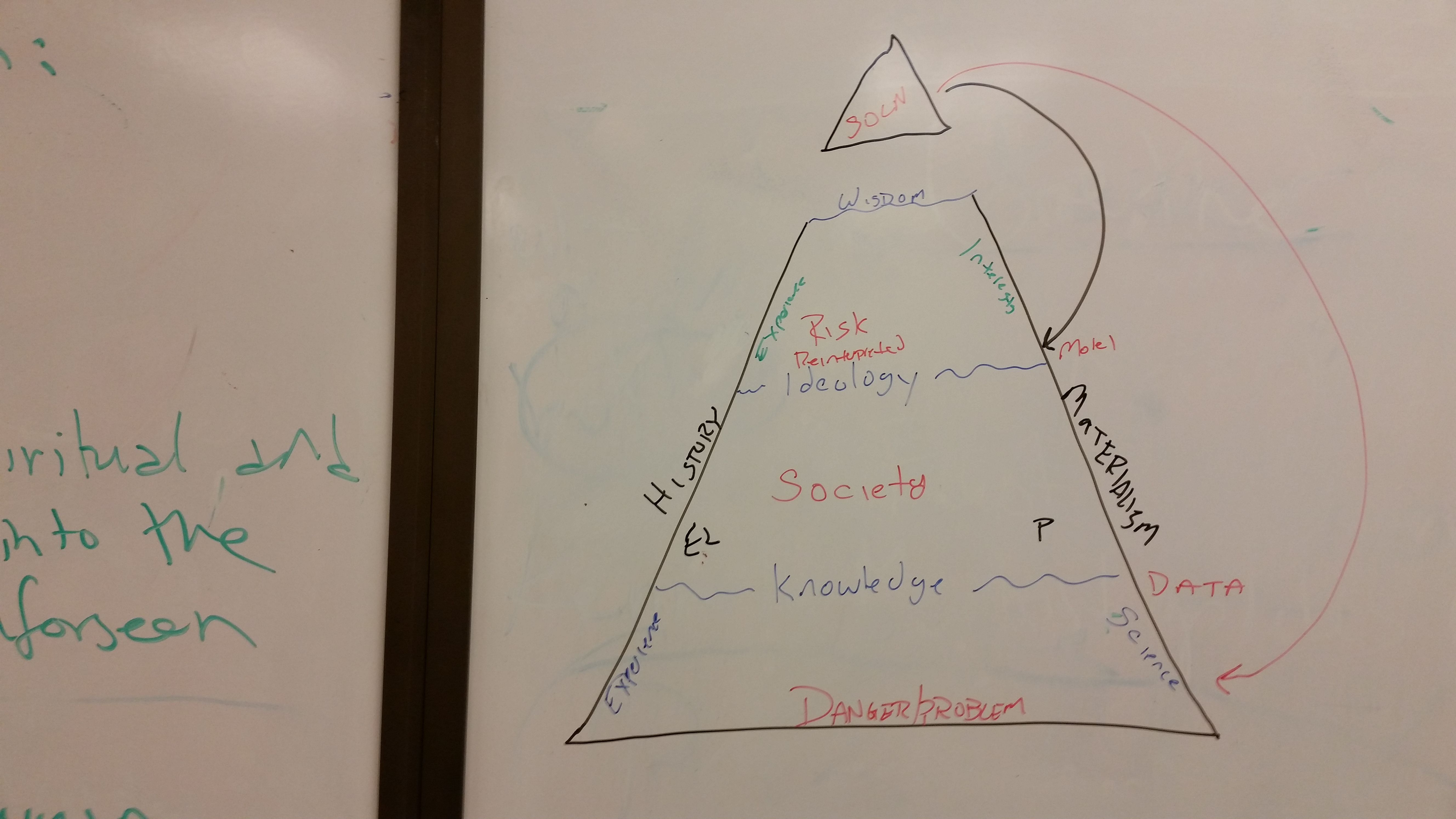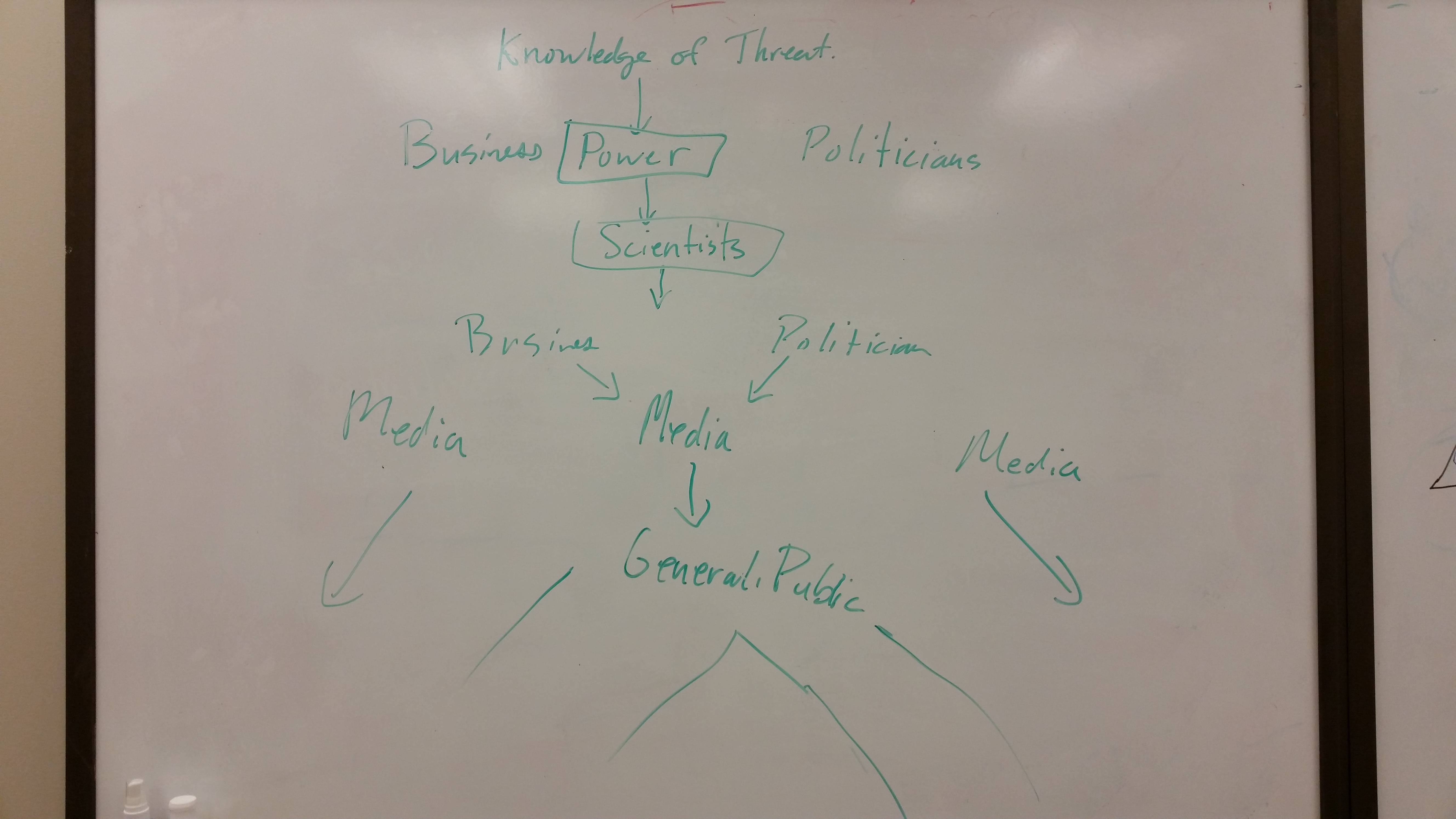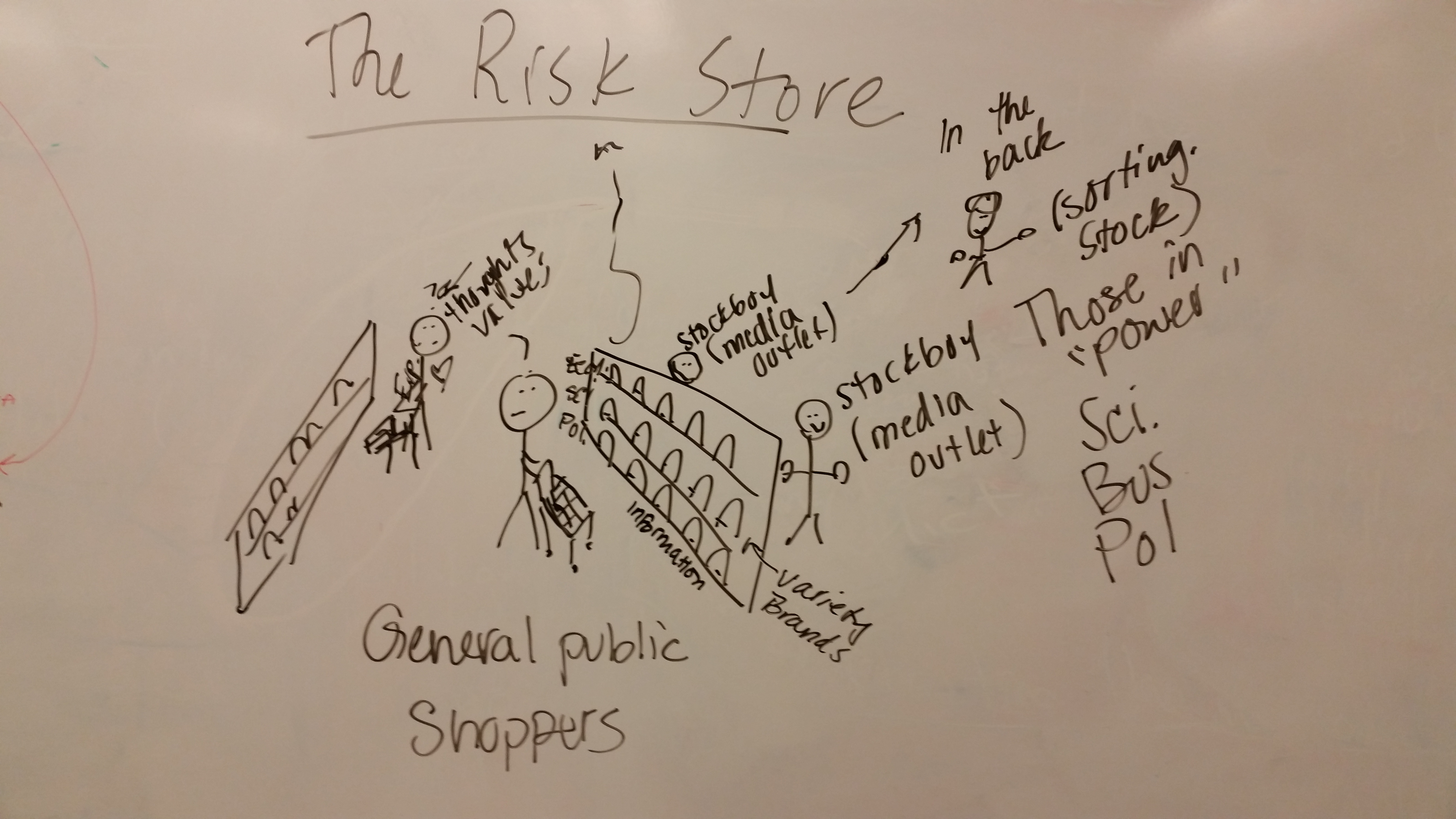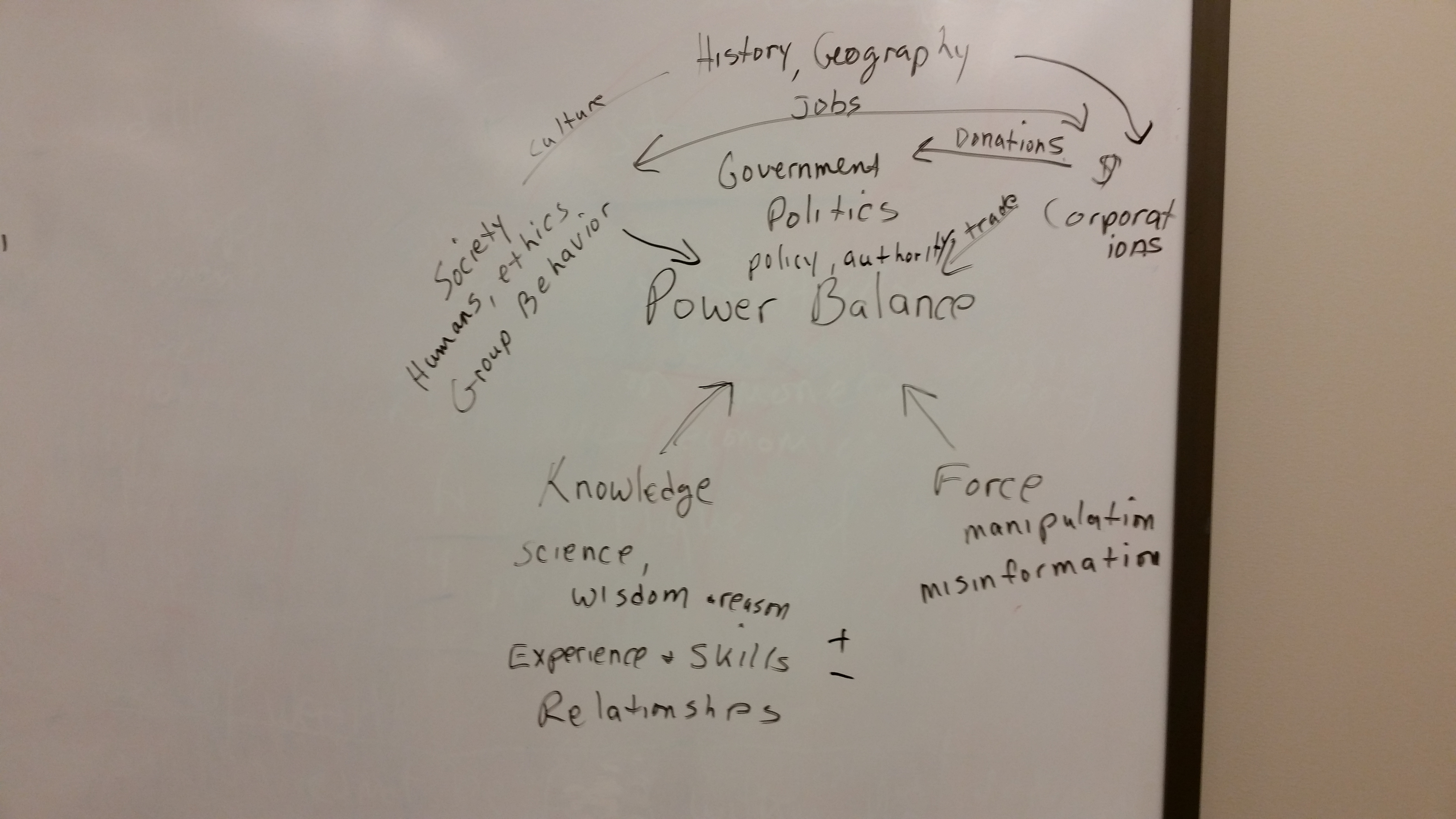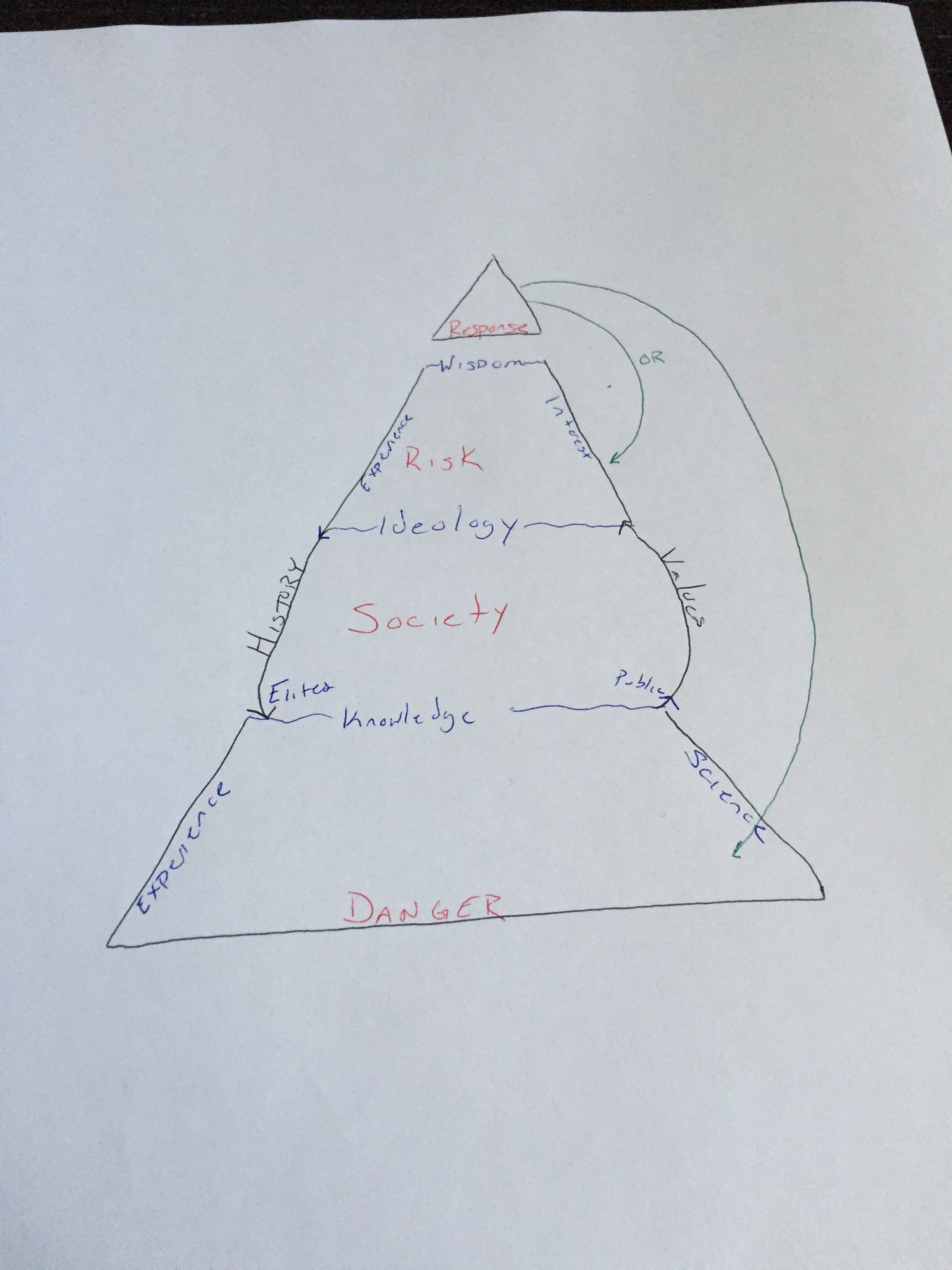 |
|
 |
MARI News Press Releases Blogs&Lists About Us Newsletter Disclaimers |
Science in Literature: Reflections on the Social Constructs of Science in Society
Course: OEAS/ENMA 795/895 Advanced/Special Topics (three credits);
Course title: Science in literature: reflections on the social constructs of science in society;
Instructors: Dr. Hans-Peter Plag, Dr. Michelle Covi, Michelle Heart;
Term: Fall 2014.
Notes Week 9: Science and collapse in poetry, plays
The first part of the session focused on a discussion of Hans Christoph Binswanger’s essay "The Challenge of Faust" in terms of its main focus: how Goethe "confronts the promises and pitfalls of the Industrial Revolution and the economic growth that it generated," based on a critical analysis of Part II of Goethe’s play, Faust (1832). At an early point in the discussion, it was clarified that Binswanger's article, "The Challenge of Faust," is based on Goethe's "Faust." (Johann Wolfgang von Goethe: "German poet, playwright, novelist, and natural philosopher is best known for his two-part poetic drama Faust, (1808-1832) which he started around the age of twenty three and didn't finish till shortly before his death sixty years later. He is considered one of the greatest contributors of the German Romantic period.").
There was a misunderstanding that he could be referring to a play by the English poet Christopher Marlowe, who in 1604 wrote a first version of his play "The History of the Life and Death of Dr. Faustus." Although Marlowes play is loosely derived from the German "Faustbuch", there is little relation between Goethe's "Faust," and Marlowe's play, besides the fact that Goethe's Faust also has its origin in the "Faustbuch," which in turn can be traced back to the 4th century.
Binwanger in his discourse on money and magic analyzes Goethe's play, focusing particularly on the second part, which according to Binswanger "confronts the promises and pitfalls of the Industrial Revolution and the economic growth that it generated." Binswanger points out that Goethe's position as finance minister at the Court of Weimar put him in a special position to comment on theswe developments and underlines the fact that Goethe's insight is of relevance for today. Goethe creates Faust, the representative modern man, as a "vigorous entrepreur who drives his workers to their utmost" and who has the devil as business partner. Key steps in the development of his enterprise are the introduction of paper money, which overcame the limitation inherent in using gold as payment, access to almost unlimited energy (through coal and the steam engine) and "the renewed establishment of the laws of property, which grant mankind the right of absolute power over nature." The vigorous nature of Faust's entrepreneurship based on the partnership with the devil makes him unable to see reality and leads to the apocalypse and total destruction of nature. In this respect, Goethe's Faust can be taken as a dystopic scenario of what some consider unfolding in the current crisis of unsustainability.
It is worthwhile to mention that Faust does not know that he is blind. A twist of this is that he prefers to be blind, too. In other words, he is content and happy in his chosen ignorance (Goethe would call this "active ignorance"), because he does not like the reality that includes uncertainty and the unknown. Since he cannot relate to the unknown and the uncertainty of nature, for example, he is afraid of it. Hence his need to control it in order to be safe from it. It is self-induced misery, a trap, and a (mental) prison that dooms Faust.
The discussion about Binswanger's work led to a focus on growth and the notion that "sustainable growths" could be an oxymoron (as pointed out by Albert Bartlett, who also stated that "The greatest shortcoming of the human race is our inability to understand the exponential function."). The opinion piece by Erik Lindberg, "The Krugman Function," was briefly reviewed. Lindberg focuses on the fact that an economist with deep insight, like Krugman, still faces the dialema of not being able to make the paradigm shift away from considering growth as necessary.
The other readings for the session, Jack London's "To Build a Fire," and Peter Heller's "The Dog Star" address another aspect of how human develop, or do not develop wisdom, based on the knowledge they have.
One conclusion is that "it is actually impossible to convince someone into deliberately choosing what is false, unless it is made justifiable by twisting of the facts & reality." This process of "justifying the unjust" involves both, the act of self-fooling (because it is gratifying to do so) and by the affect from the outside agents/society. The resulting "blindness" (by choice, because it is more gratifying and comforting than the reality) include conviction that what one "sees" is the reality.
The remaining part of the session was used to discuss the conceptual models for the decision making processes in a community facing an emerging threat. Each student drew his or her model and the white board and gave an explanation of the model (see below).
A last point was the question what determines power in society? The answer was that we have power.
Discussion topic for week 10: The students are asked to ponder during the week about how society creates the model that justifies the wrong model. The "method of justification" is the key here. Please, come up with models and figures.
To see the picture in higher resolution, just click on the picture.
